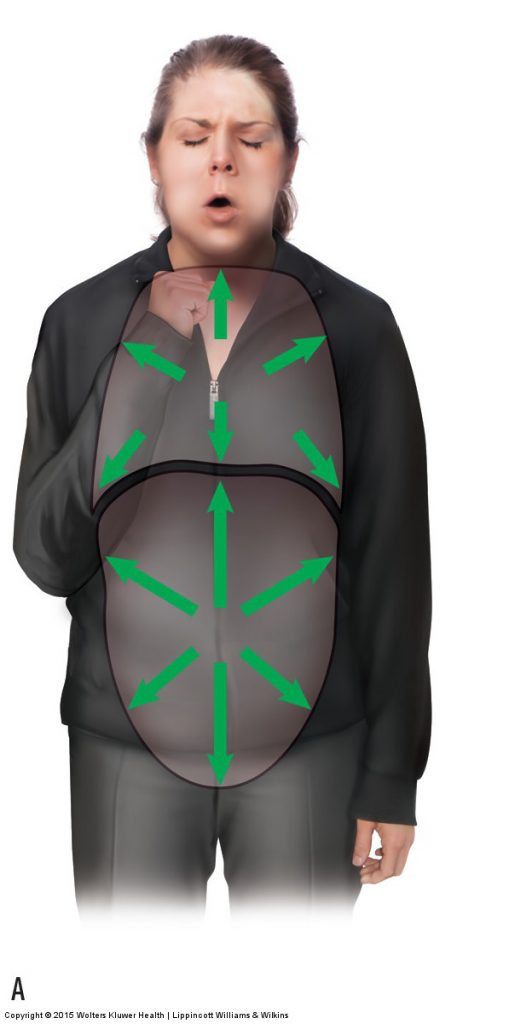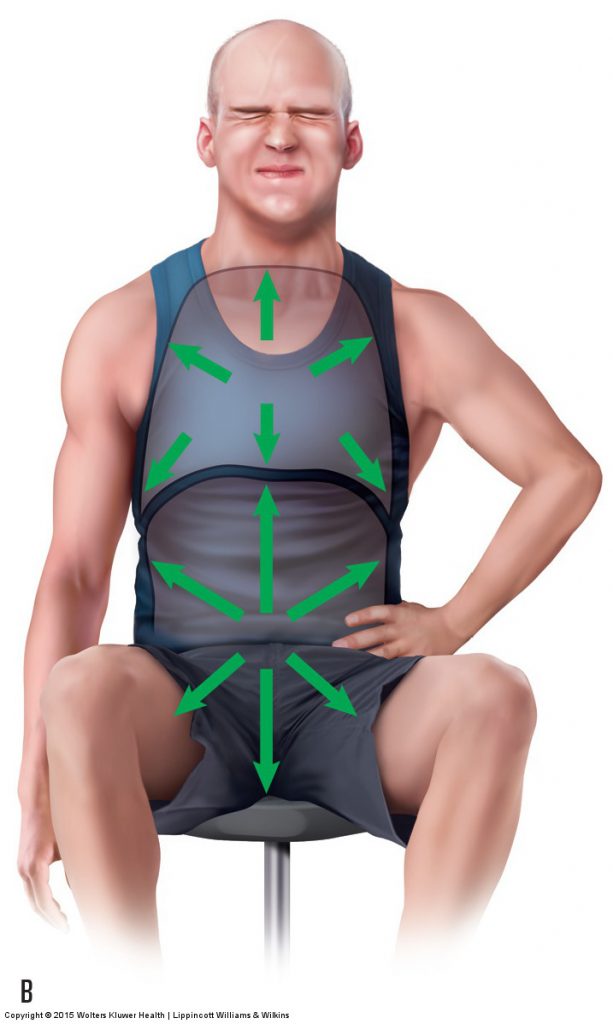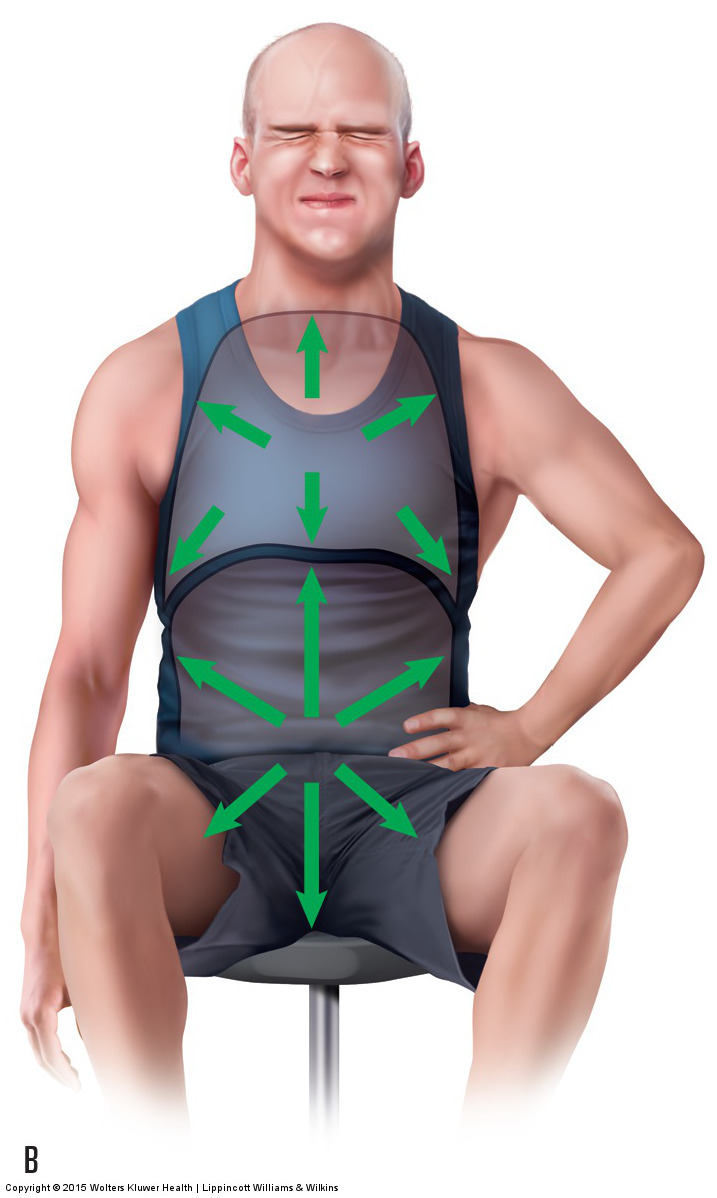This blog post article is part of a series of articles on assessment of the low back and pelvis. Scroll to the end of this article to see the others in this series.
Cough Test and Valsalva Maneuver


Figure 7. Cough test and Valsalva maneuver. (A) In the cough test, the client is asked to cough forcefully. (B) In the Valsalva maneuver, the client is asked to inhale a deep breath and hold it and then bear down as if moving the bowels. Permission Joseph E. Muscolino. Manual Therapy for the Low Back and Pelvis – A Clinical Orthopedic Approach (2015)
Both the cough test and Valsalva maneuver/test are designed to increase intrathecal pressure, or pressure on the spinal nerves in the intervertebral foraminal spaces. The mechanics are the same as with the SLR tests: Increased compression on these neural structures can cause referral of symptoms into the lower extremity in a client with a space-occupying lesion. However, whereas the SLR test only increases compression to the lumbar spine (and perhaps the lower thoracic spine), the cough test and Valsalva maneuver cause increased compression to be experienced throughout the entire spine. Therefore, they will also assess a pathologic disc and advanced degenerative joint disease (osteoarthritis) of the cervical spine (if the client experiences referral symptoms into the upper extremity).
The cough test is performed by asking the seated (or standing) client to forcefully cough (Fig. 7A). The Valsalva maneuver is performed by asking the seated client to take in a deep breath, hold it in, and bear down as if moving the bowels (Fig. 7B). To preserve client modesty and avoid possible embarrassment, avoid eye contact with the client when the Valsalva maneuver is being performed. In each case, as with the SLR tests, local pain in the low back is not a positive sign. A positive sign is the presence of referral symptoms into the lower extremity (or upper extremity for a cervical spine space-occupying lesion).
Note: Valsalva Maneuver
Performing the Valsalva maneuver also results in a temporary decrease in blood flow to the heart and brain, termed a vaso-vagal reflex, possibly causing the client to become dizzy and perhaps even faint. Completing the maneuver also causes a sudden increase in blood flow to the heart. This can cause an increased strain on the heart and may be risky for clients who have a weak heart (as from congestive heart failure or other advanced cardiac disease). Therefore, it is safer to perform the Valsalva maneuver with the client seated and to carefully monitor the client as the test is performed.
This blog post article is the 10th in a series of 18 blog posts on the subject of assessment of the low back and pelvis.
The blog post articles in this series are:
- Introduction to Assessment of the Low Back and Pelvis
- Health History
- Introduction to Physical Assessment Examination of the Low Back and Pelvis
- Postural Assessment of the Low Back and Pelvis
- Range of Motion and Manual Resistance Assessment of the Low Back and Pelvis
- Muscle and Bone Palpation of the Low Back and Pelvis
- Joint Motion Palpation Assessment
- Overview of Special Orthopedic Assessment Tests of the Low Back and Pelvis
- Straight Leg Raise Tests for Space-Occupying Lesions
- Cough Test and Valsalva Maneuver
- Slump Test
- Piriformis Stretch Test
- Straight Leg Raise and Manual Resistance Tests for Strains and Sprains
- Nachlas and Yeoman’s Tests
- Sacroiliac Joint Medley of Tests
- Treatment Strategy for the Low Back and Pelvis
- Self-Care Advice for the Client with a Low Back / Sacro-Iliac Joint Condition
- Brief Review of Assessment and Treatment of Conditions of the Low Back and Pelvis


